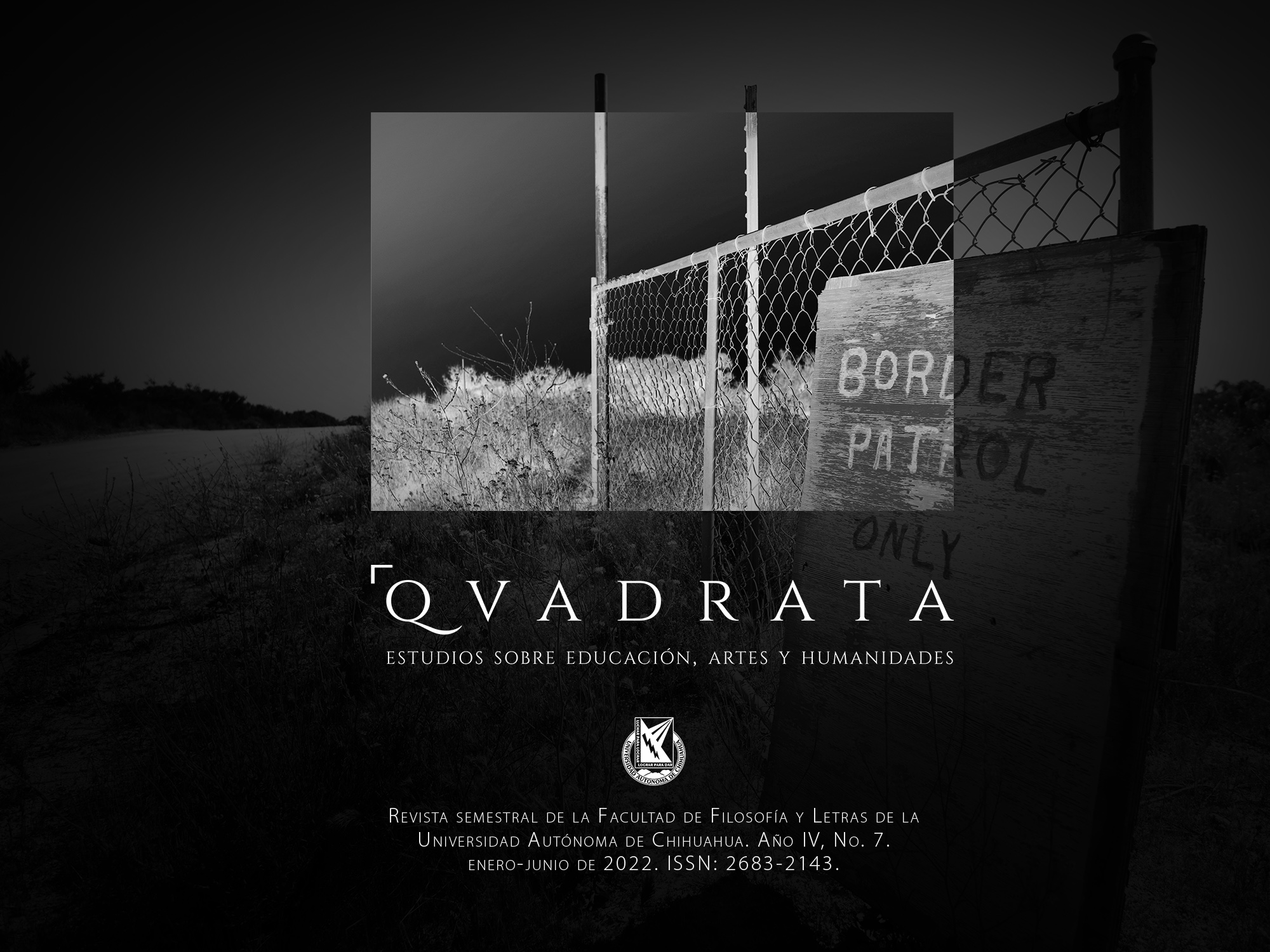Towards an esthetics of the singed voice as an expressive body
DOI:
https://doi.org/10.54167/qvadrata.v4i7.895Keywords:
Singing voice, expressive body, experience, musical aestheticsAbstract
The way we interact, and through our senses, give meaning to the world around us, has been a central theme for contemporary philosophy and psychology. In relation to the musical practice as artistic doing, we must consider this interaction also as a type of aesthetic experience. We believe that, within the framework of the problems that can be approached from aesthetics, we can place the sung voice even beyond the idea of music as a work or object. In this sense, the voice emerges as a communicative form where, a determined time-space, the different forms of interaction with the other and the meanings that emerge before and during the interaction, configure the forms in which the vocal sound is produced; our voice, understood as an expressive body, is constantly transformed giving meaning to each moment that passes in vocal production, in musical performance. Next, we present an essay on the aesthetic meanings related to the musical sound of the sung voice as an expressive body, based on two general sections, (i) the aesthetic dimension of the musical as an experience, and (ii) the voice as a corporal expression.
References
Bateson, G. (1998). Pasos hacia una ecología de la mente, única edición. Buenos Aires: LOHLÉ-LUMEN.
Bohlman, P. V. (2001). “Ontologies of Music”. En Rethinking Music, N. Cook, y M. Everist Ed. Oxford: OUP, 17 – 34.
Canal Encuentro. (23 de mayo de 2017). Los caminos de Atahualpa: Si habré cantado yo - Canal Encuentro HD [Archivo de video]. Youtube. https://www.youtube.com/watch?v=Fp-Q9ZGnkd0.
Cook, N. (2003): Music as Performance. In M. Clayton, T. Herbert y R. Middleton (Eds). The Cultural Study of Music. A Critical Introduction. Nueva York y Londres: Routledge, 204 – 214.
Cross, I., y Tolbert, E. (2009). Music and meaning. The Oxford handbook of music psychology, 24-34.
Dahlhaus, C. (1996). Estética de la música, Kassel: Reichemberger.
Djoulou Ram. (26 de octubre de 2012) Camarón de la Isla y Paco de Lucia Como Agua [Archivo de video]. Youtube. https://www.youtube.com/watch?v=3KZyy8Oc1QA.
Eidsheim, N. S. (2008). “Voice as a technology of selfhood: towards an analysis of racialized timbre and vocal performance”, Ph.D. thesis, philosophy department, University of California, San Diego.
FATPOLO. (28 de abril de 2011). Jose Antonio Mendez - La Gloria Eres Tu [Archivo de video]. Youtube. https://www.youtube.com/watch?v=hQlAE4y6Y50.
Feld, S. y Fox, A. A. (1994). “Music and language”. Annual Review of Anthropology (23), 25 – 53.
García Pindado, S. (2015). “La voz del fado: una propuesta de análisis del canto de Amália Rodrigues”, Tesis de grado, Universidad de Valladolid, Valladolid.
Hanslick, E. (1854). The beautiful in music [De lo bello en la música]. Londres, Reino Unido: Novello and Company.
Idhe, D. (2007). Listening and Voice. On the phenomenology of sound, 2.ª edición. Albania: State University of New York Press.
Johnson, M. (2007). The meaning of the body. Aesthetics of human understanding. Chicago: The University of Chicago Press.
José Antonio Méndez – Tema. (03 de abril de 2020). La gloria eres tu (En vivo) [Archivo de video]. Youtube. https://www.youtube.com/watch?v=6Hx2CjNfStE.
Lakoff, G. (1987). Women, Fire, and Dangerous Things. What Categories Reveal about the Mind. Chicago: Chicago University Press.
Manuel gdfgmf. (04 de noviembre de 2012). Amália Rodrigues - Sabe-se Lá [Archivo de video]. Youtube. https://www.youtube.com/watch?v=GY1f7xnX-Xk.
Marchiano, M. y Martínez, I. C. (2020). “La politización de la música en la experiencia estética”. Arte E Investigación, (18), e059. https://doi.org/10.24215/24691488e059
Martinez, I. C. (2007). The Cognitive reality of prolongational structures in tonal music. Doctoral Thesis, Roehampton University.
Martínez, I. C. (2012). “La música como experiencia imaginativa y corporeizada: implicancias para una idea de música como un modo expresivo de conocimiento”. A Contratiempo, (20), 1 – 3. Descargado en https://www.aacademica.org/martinez.isabel.cecilia/117.pdf el 1 de Febrero de 2020.
Martínez, I. C. (2014). “La base corporeizada del significado musical”. En Psicología de la música y del desarrollo. Una exploración interdisciplinaria sobre la musicalidad, S. Español, Ed. Buenos Aires: Paidós. 71 – 110.
Martínez, I. C., Español, S. A., y Pérez, D. I. (2018). “The Interactive Origin and the Aesthetic Modelling of Image-Schemas and Primary Metaphors”. Integrative psychological & behavioral science, 52(4), 646 – 671. doi:10.1007/s12124-018-9432-z
Meyer, L. (2001). Emoción y significado en la música [traducción J. L. Turina], Madrid: Alianza Editorial.
Moran, N. (2014). “Social implications arise in embodied music cognition research which can counter musicological individualism” Frontiers in Psychology, 1 – 10.
Plazaola, J. (2007). Introducción a la estética: historia, teoría, textos, 4.ª edición. Bilbao: Biblioteca Deusto.
Polo, M. (2008). La estética de la música, 1.ª edición. Barcelona: Editorial UOC.
Rousseau, J. J. (2008). Ensayo sobre el origen de las lenguas [traducción María Teresa Poyrazian], Córdoba: Universidad Nacional de Córdoba y Encuentro, C. 12.
Taylor, D. (2016). Actos de transferencia. En El archivo y el repertorio: La memoria cultural performática en las Américas. Santiago de Chile: Ediciones Universidad Alberto Hurtado.
Tuxame e. (23 de diciembre de 2015). Luzmila Carpio entrevista - Historias debidas [Archivo de video]. Youtube. https://www.youtube.com/watch?v=ojOx7xPtuMQ.
Weidman, A. (2014). “Anthropology and voice”. Annual Review of Anthropology (43), 37 – 51.
Zumthor, P. (1997). Introdução à Poesia Oral. São Paulo: Hucitec, EDUC.





 QVADRATA. Estudios sobre Educación, Artes y Humanidades año V, número 9, enero-junio de 2023, es una publicación semestral editada por la Universidad Autónoma de Chihuahua. Calle Escorza #900. C.P. 31000, Chihuahua, Chih. Tel. (614) 439-1500 ext. 3844,
QVADRATA. Estudios sobre Educación, Artes y Humanidades año V, número 9, enero-junio de 2023, es una publicación semestral editada por la Universidad Autónoma de Chihuahua. Calle Escorza #900. C.P. 31000, Chihuahua, Chih. Tel. (614) 439-1500 ext. 3844, 
